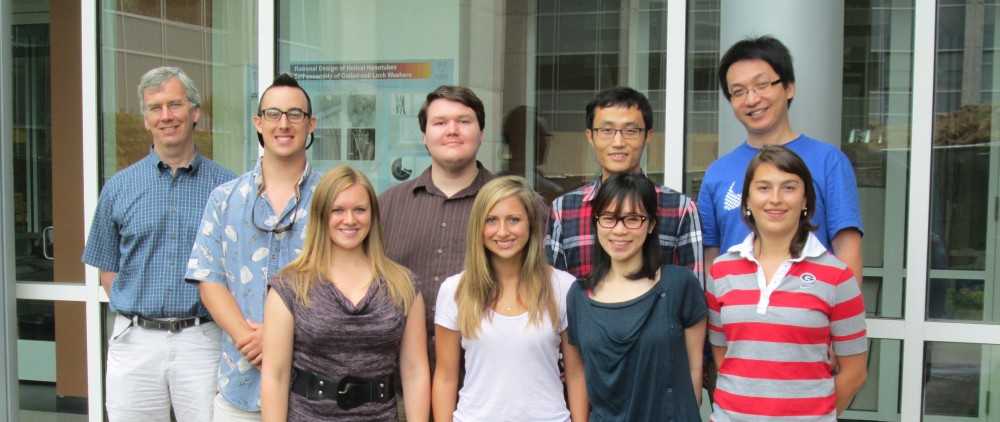
Figure 2. A. Helical wheel diagram of a cross section of the trimeric coiled-coil depicting the suppositious silver ion-binding site. B. Amino acid sequence of TZ1H depicting the three core histidine residues. The proposed packing arrangement of peptides of TZ1H in the -helical fibril is shown below. The staggered alignment arises from an axial displacement between adjacent protomers (white, His-containing heptads; red, non-His-containing heptads).C. Proposed coordination environment of the silver (I) ion in TZ1H based on the crystallographically determined structure of a tris(benzimidazole) silver (I) complex. D. Dependence of the CD spectra of TZ1H (50 mM, 10 mM Na2HPO4, pH 5.6) on silver (I) ion concentration at 4 °C. Inset: Dependence of []222 on silver (I) ion concentration.E. EDX analysis of a concentrated preparation of silver ion-induced fibers of TZ1H at equimolar silver:peptide concentration. The presence of copper arises from the EM grid. Inset: Dark-field STEM image of a dispersed fibril specimen (magnification: 200kx).
The oriented axial assembly of protein motifs represents the primary structural feature that underlies the formation of native protein-based fibrils such as keratin, collagen, tubulin, and F-actin. Self-assembly occurs via linear propagation of the subunits along an incipient fibril that is mediated through specific molecular recognition interactions at structurally complementary interfaces. The structural features that guide self-assembly are encoded within the sequences of the protein subunits and include complementary packing of side chains at the interface, as well as electrostatic, hydrophobic, and hydrogen-bonding interactions. Given the richness of the molecular-scale information programmed within the sequences of polypeptides, it should not be surprising that synthetic materials have yet to recapitulate the self-assembly behavior of native protein-based, assemblies. Thus, elucidating design principles that underlie the self-assembly of fibrillogenic proteins into structurally defined, supramolecular structures is of interest not only in generating synthetic polypeptides that mimic native structural proteins but also for the design of new materials with biological, chemical, and mechanical properties that exceed those of currently available synthetic polymers.
The simplest structural units that comprise protein-based fibrils are based on fundamental secondary structure elements such as alpha-helices and beta-strands. Although self-assembling beta-sheet peptides based on amyloid and related de novo amino acid sequences are being actively scrutinized as functional nanoscale materials, the design of self-assembled fibrils derived from alpha-helical peptides has not advanced to a similar extent. Helical scaffolds differ in critical structural features from beta-sheet assemblies, including the structural periodicity of the fiber repeats, the orientation of protomers relative to the long axis of the fibril, and the physical basis of self-association. These considerations suggest that helical protomers may be effectively considered as complementary blocks to beta-strands, and that the resulting coiled-coil fibrils may have significantly different physical properties than those of beta-sheet fibrils. Moreover, in contrast to amyloidogenic peptides, the principles that govern the association of helical protomers into discrete coiled-coil assemblies have been elucidated in detail on the basis of structural studies of model peptides such as leucine zippers. However, until recently, the potential of these helical peptides for the construction of synthetic self-assembled materials remained largely untapped, despite the fact that fibrils derived from alpha-helical coiled-coil motifs occurs widely in native biological systems. Thus, alpha-helical proteins derived from coiled-coil structural motifs represent attractive targets for de novoengineering of structurally defined fibrils from self-assembly of synthetic helical protomers.
Coiled-coil structural motifs occupy multiple roles in biological systems, including protein–protein recognition, locomotion, signal transduction and sensing/actuation, many of which would be desirable to emulate in synthetic nanoscale systems. Two distinct challenges are encountered in this approach to materials design: the ability to re-code the canonical sequences of native coiled-coil structural motifs to accommodate the formation of structurally defined supramolecular assemblies (e.g. synthetic helical fibrils), and the development of methods to control supramolecular self-assembly of these peptide-based materials under defined conditions that would be amenable to conventional fiber-processing methods. Previous research in our laboratory, as well as others, has provided insight into the critical structural parameters that govern the formation of extended helical assemblies. Although significant structural characterization remains to be performed on these systems, in particular, to establish the structural relationship between peptides within the assembly in the context of the design rules, the main focus of our current research is the development of methods to control the self-assembly process. We envisage a strategy based on the rational design of selective binding sites for guest species (metal ions, complex ions and small molecules) within de novo-designed coiled-coil peptides as a mechanism to control the reversible assembly/disassembly of helical fibrils based on these structural motifs. For example, the peptide TZ1H, a structural variant of the trimeric isoleucine zipper GCN4-pII (PDB ID: 1GCM), contains histidine residues at core d-positions of alternate heptads that define three trigonal coordination sites within the coiled-coil trimer (Figure 2). Circular dichroism spectropolarimetry indicated that peptide TZ1H undergoes a random coil to alpha-helical conformational change upon binding of one equivalent of silver (I) ion, but not copper (II), nickel (II), or zinc (II) ions. Isothermal titration calorimetry provided evidence for a single binding-site model in which each peptide contributes one net silver (I) coordination site in agreement with the proposed structural model. Transmission electron microscopy revealed that the self-assembly of TZ1H into long aspect-ratio helical fibers coincides with the conformational transition. EDX analysis and ICP-MS confirmed the presence of silver (I) ion in the fibers. These results demonstrate that the rational design of selective metal ion-binding sites within de novo-designed peptides represents a promising approach to the controlled fabrication of nano-scale, self-assembled materials. Our current research focuses on the development of methods to control the synthesis of higher-order coiled-coil and collagen assemblies. Structural analysis of the assemblies remains a critical consideration and we have initiated several collaborative efforts that employ the techniques of fiber-diffraction, solid-state NMR spectroscopy, small-angle X-ray scattering, and scanning transmission electron microscopy to address this issue.
